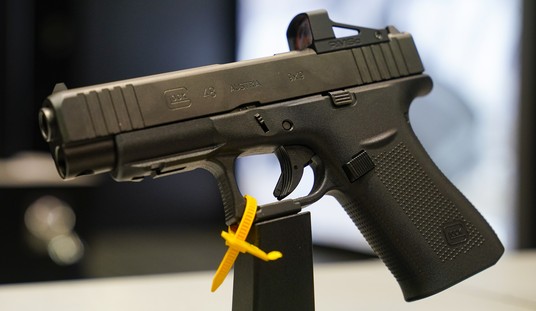Way back in 1955, when the Whitney Wolverine .22 pistol first appeared, I wanted one. Alas, even the modest $39.95 price was a problem. Remember, those were real dollars back then, and my weekly pay was about $53. So, I didn’t get one. In later years, its relatively short time of production put it into the collector category, and you know what that will do the price.
Fortunately, there was another person in the firearms industry who had always liked the Wolverine: Bob Schuetz of Olympic Arms. At a SHOT Show in the late 1990s, he showed me an aluminum frame casting, and told me he was going to bring it back. Some things delayed this. There were other important projects, and there was a damaging fire at the factory out in Washington state. However, in 2005, the Wolverine returned.
Before we get into its features, a little history: The original pistol was designed by Robert L. Hillberg, a former research & development director for High Standard, with some input from Howard Johnson of the Bellmore-Johnson Tool Company. The Whitney name was used because the company was located near the old Eli Whitney factory site. From 1955 to 1962, the production total was around 13,000 pistols, most of them with a “blue” finish. Around 900 of them were in nickel and are now a collector’s prize.
Making the entire frame a single alloy part and putting all the steel units inside was, for its time, quite an innovation. The ergonomics were superb, with a slanted grip that had a deep incurve at upper rear. The bolt was entirely internal, with good grasping knobs at the rear. Over-all, the sweeping external lines gave it a “space-age” appearance.
It’s possible that in a small way, the last thing mentioned may have contributed to its short production time. Back then, a science-fiction look may not have gone over so well with the goodold- boys. Also, as with many small starting-out companies, there may have been financial problems. Materials, manufacturing, and the cost of advertising can quickly add up. Let’s get back to the present, and the “new” version from Olympic. In our time, even the “good-old-boys” are not bothered by a space-age look, or an alloy frame envelope. Actually, it’s not alloy this time. Schuetz decided, wisely, to go with high-tech polymer. In many ways, it’s really better than light metal.
During the preliminary design set-up, some of the internal parts were slightly altered, to make them stronger. On the outside, though, it’s all just like the original. It’s the Wolverine. The previously mentioned grip features give it a perfect “printability,” and the sight picture is square post and notch. The rear sight is dovetailmounted, and can be moved laterally.
On top, the sight rib has fine crossgrooving to prevent glare. Below the rib, there are nine cross-vents. Unnecessary, but they look cool. In the traditional location at left upper rear, the manual safety is moved downward for on-safe, up to fire. In onsafe mode, the sear is blocked and the trigger bar is disconnected. There is, alas, a magazine-disconnect safety.
With the magazine out, it can’t be fired.
So, in case of emergency always keep a spare mag at hand.
The magazine is very strongly-made, and they are marked on both sides at 5 rounds and 10 rounds. There is a cross-hole in the magazine follower that exactly fits an empty cartridge case, a great loading aid. The magazine catch is at lower rear, immune from inadvertent holster depression. It has a very secure engagement, but is easy to operate.
Just like the one on the original pistol, the hammer spur has no thumb-serrations.
It doesn’t need them. At fullforward position, the straightup spur has adequate protrusion, and cocking is easy. The firing pin is a full-reach type, so don’t carry the Wolverine with the chamber loaded and the hammer fully down.
Ammunition should be only High-Velocity .22 Long Rifle.
Some serious target pistols are tuned to work with Standard Velocity loads, but in this case they may not fully cycle the bolt.
In a recent range outing with the Olympic Arms Whitney, I was using my favorite .22 LR HV load, the Mini-Mag from CCI.
The Wolverine liked it. In around 100 rounds fired, no malfunctions.
On my pistol, the Lyman Electronic Scale says the trigger pull average is 3 pounds, 15 ounces. There’s a tiny bit of take-up, a clean break, and some overtravel. About eight years ago, when I first tried it at 25 yards from a casual rest, the pistol delivered an amazing 1.5-inch well-centered group. I’m sure it will still do that, but this time out, the best my aging eyes could do was a 2.5-inch average.
For those who want the numbers: The unloaded weight is 23 ounces.
Overall length is 9 inches, height 5.6 inches, and barrel length 4.6 inches.
The magazine holds 10 rounds.







Join the conversation as a VIP Member